


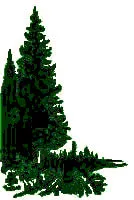
Once the mill was in operation and offering steady employment, the need for a school became apparent. The request was presented to the Big River Lumber Company and the manager, Mr. Oscar Sharpe, who wrote Hon. J. A. Calder, Minister of Education, asking that he consider building a school here, which would serve at least fifty families. Funds were not available at that time, but the suggestion was made that a Public School District be formed, and a formal petition to this effect was filed by Thomas Maxwell on February 14, 1911. The Big River School District No. 32 was erected on May 23, 1911. The district has such a low number as a result of the formation of two provinces, Alberta and Saskatchewan. Before the provinces were formed, northern Alberta and Saskatchewan were called the Northwest Territories. Alberta for was formed first; therefore it received all the lower numbers for its school districts. However, No. 32 was not used, and when the province of Saskatchewan was formed, it was assigned to the Big River District. The Big River Lumber Company built and operated the first school. (This was on the same land that the Junior High School of today now stands.) It was the lumber company that called for the first election of school trustees - thus forming the first School Board in Big River. When the new school building was ready for use in the fall of 1911, the Board hired Miss Katherine Mathews to teach the forty student enrollment. There was very little equipment at this time, no books, few seats, and the teacher was required to act as janitor as well. 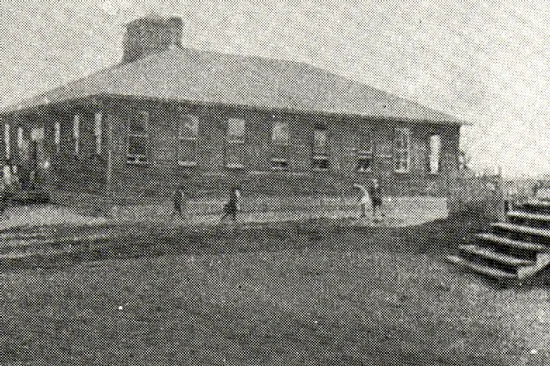
The question of teachers salary, as well as the upkeep of the school, became the lumber mill's responsibility therefore, a fixed charge of forty-five cents per month was levied on every household to help pay expenses. Around this time the Catholic families began requesting a separate school for their children. Father Gagne contacted the Dept. of Education in this regard and although the request was denied, he succeeded in adding Mr. Joseph V. Morneau to the teaching staff for the year 1914. Mr. Morneau was a teacher from Quebec and was able to give some special instruction to the Catholic students. The other two teachers on staff at that time were Mr. Garry and Mr. Elizor Planke. The same year another trustee election took place. Those taking office were H. E. Thompson, Thomas Thibeault and Doctor George Fenton. Father Mollier again requested that the Department of Education build a Catholic School, pointing out the number of French families living in the district. The request was again denied as the mill refused to support two schools. The Department of Education also pointed out that all surveyed land was owned by the Lumber Company and a district of seven hundred and fifty acres could not support two schools. The three room public school continued in much the same manner for several years. The following are some of the teachers serving in the early years: Principal J. W. Patton, Miss Gertrude Folley, George Thibeault, Muriel Fredman, Bertha Olson, Joseph A. Mahon, Bernice Shaw, Jean Murray, Luella Shaw and Aleda Brownfield, Mr. Jerry Berry was elected as trustee in 1920 and Frank Beeson was Truant Officer. The school continued to operate under the financial assistance of the lumber company until after the big fire, when the company began to talk of closing down and moving out. In 1921, the company agreed to sell all their land and buildings to the Big River Development Company. This group was to take over in January, 1922. However, as the company was leaving during the summer of 1921, this left the school completely on its own without funds for salaries or maintenance expenses. The School Board was at a loss to know what action to take. One of the group from the Development Company, Mr. W. W. Turple, wrote to the Minister of Education explaining that school support from the Company had been withdrawn and asked for financial help in order that the school might continue to function. The Government was unwilling and unable to give aid at this time because there was not sufficient assessment or surveyed land to warrant this expense. Several months of great stress followed the lumber company departure. Teachers were not paid for months nor was the janitor; costs had to be kept to a bare minimum. Local store keepers became concerned over the rising bills for the school accumulating on their credit lists. They sent a letter to the Department of Education - "We, who are interested in the school, have extended all the credit that we possibly can. Unless we get immediate relief, we will have to turn the children out on the street and close the school doors." The Board called special meetings to try to avert such actions and all agreed that the solution was to extend the boundaries of the school district to become large enough to be able to make a loan. This was done and the district included seventeen sections. However, with expenses of back wages and fuel bills to be met, along with current expenses, it was plain to see that this arrangement was only temporary and more assessment had to be the answer. It was necessary to incorporate as a village in order to establish more assessment and steps were immediately taken to begin this move. Time after time, the board was reminded that there was no way of financing the school except by funds obtained locally and the regular Government grant. Under the circumstances, the teaching staff was reduced to a minimum and every effort was made to operate the school with the utmost economy. The school was kept open during this time only because of the belief that with the village incorporated and the assessment and taxation placed on a better basis, the school could be financed with less difficulty. On August 22, 1923, the school was officially declared to be in the village of Big River School District No. 32. During these years, some of the teachers were: Wm. James Mahoney; Olga Figeland; Freda McKnight; Fred Henwood; and R.C. Potter. Some of the Trustees were: J. S. Forbes; H. W. Halpin; J. Berry; Wm. E. Wakefield; E. J. Oliver; Fred Coates and O. P. Godin. In 1924, Mr. Fred Henwood established a night school and held classes for the rate of one dollar per session. With more borrowing power and a strict budget, the school managed to survive but was destroyed by fire in 1928. All records, registers, etc., were lost in the fire and it was necessary to find temporary room facilities until a new school building could be provided. Construction was begun immediately and completed by the following year. 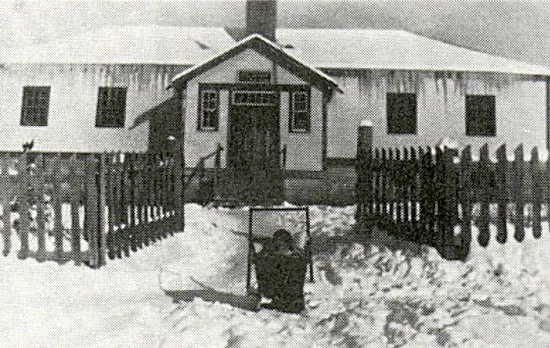
By 1931, there were four teachers in what was really a two-roomed school. The third classroom was a basement room usually presided over by the Principal, Mr. W. R. Gould. This room housed the senior grades. Mrs. Margaret Bouchard was the teacher in the primary room. Eventually her room became so crowded that the playroom in the basement was converted into a classroom, where Miss Meta Brownfield taught the beginners. Frank Michie had the other upstairs room. All were large rooms but usually over crowded. Mrs. Bouchard had approximately seventy students at some times. Mr. Michie recalls one inspector walking into his room of sixty-five smiling faces and inquiring if it was a school or a theatre. Besides the arduous task of preparing and presenting lessons , marking and grading, the teachers carried on a number of other activities. Track and Field was held each year and in the winter, they built and maintained a school skating rink, flooded with the water pumped from the school well with the help of a balky gas engine. At recess time, every student would be out on the rink playing hockey with whatever he or she had in the way of a hockey stick. At Christmas time, the teachers would put on a concert. Mrs. Ivery Newton was a great help with the music and dances. The stage was built in Mr. Michie's room out of trestles, beams and platforms lugged out of the basement. After the concert, a public dance was held in Mrs. Bouchard's room. School equipment and supplies were difficult to obtain. Most of the books, sports equipment, etc. was provided from money raised by the teachers and students. Mr. Michie tells of squatting in front of the old log burning furnace in the basement, melting down old radio batteries into weights to teach the laws of the lever to grade eight. During the "Dirty Thirties" there was often no money with which to pay taxes; consequently the School Board had nothing with which to pay the teachers. Many settlers paid their tax by bringing in cordwood at one dollar and seventy-five cents a cord for use at the school. Sometimes, in the spring, the schoolyard was half full of cordwood brought in to pay taxes. Frank Michie recalls that when his board bill of twenty-six dollars per month (twenty- five for board and room and one dollar for electricity) would get too far behind, he would ask the school secretary for a pay cheque - which would be duly issued. It was worthless of course, because the school board had no money. However, the cheque was given to the landlady in lieu of board; she would take it to the grocer, who would accept it on her grocery bill and in turn give it to the Village for taxes. They in turn would turn it over to the School Board as part of their allotment toward school taxes. So each cheque would go the rounds paying bills as it went but never really worth anything. It was a highly irregular scheme, but quite successful in overcoming a shortage of cash. During this time, both the school and the church supplied a social need for the people, young and old alike. Entertainment had to be original, as there were no funds to warrant anything costly. THese were the years when children delighted in playing such games as "Run Sheep Run", "Red Light", "Tin Can", and "Pie". Skipping, jacks and softball were other sources of recreation. In the evening, the adults enjoyed the social events of hardtime dances, festivals, or concerts - all prepared and held at the school. The school was a focal point for the whole community and affected each person in an individual way. Much credit must go to the three teachers who were here during these years and who put so much of themselves into the task of providing both education and family recreation. Their performance stands out clearly as a beacon during those troubled years. Mr. William Gould gave devoted service both to the school and the community, as did Mrs. Margaret Bouchard and Frank Michie. 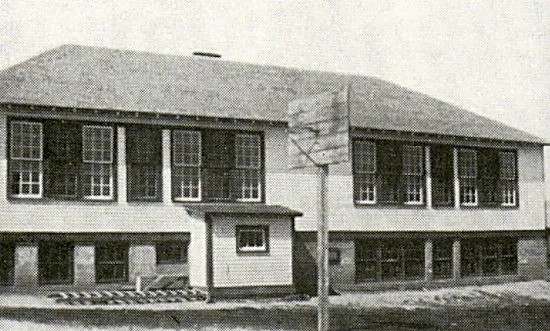
The school continued in a fairly smooth manner through the war years and on into the 1950s. Some of the teachers during this time were: Mr. Gordon Walker, (who in 1930, had seventy pupils in his classroom), Miss Meta Brownfield, George Pierce, Mr. Stapleton, Clifford Hartett, Lloyd Gellespie, Mrs. Walda Hartnett, Mr. Barry, Alice Meger, Mrs. Vookeroth, Mrs. A. Crouse, Miss Mabel McLaren, Nora O'Flanagan, Miss B. Neely, Isabelle Wood, Mr. Wearing, Anne Leach, Lillian Hreck, M. Ferworm and Miss P. McNabb. Temporary school rooms were located in the United Church, Legion Hall, and the Post Office, as well as several other locations, to accommodate the sudden rise in school population due to centralization. Rural schools in all of the surrounding districts were being phased out and school buses were appearing. Bus routes were established and the country students began a new era. With the sudden increase of students in the town school, more space became a concern and plans were made to build more classrooms. In 1955, the first four room school was built on Public Reserve land west of the present R.C.M.P. barracks. This building provided four rooms on the upper level and two basement rooms intended for play area, but these rooms were used for classrooms as well, for the next few years. The second school was built in 1956 and was the new High School at that time. Emil Zinovich was the contractor for this building. At the present time, both these schools are used for Intermediate grades. Some of the teachers in these schools were: Mr. W. Gould, Arthur LaBrash, Nestor Romaniuk, Frank and Alice Mazerkewich, M. J. Moberg, Stan Dunbar, Mr. and Mrs. Laback, Mrs. Swanson, Mrs. Wood, Mrs. Chalifour, and Mrs. Ormiston. The present High School was built in 1965 with the addition of a gym and open area classrooms in 1972 and 1978. Mr. Andrew Labach is the Principal at the present time. Central School Boards were formed when students were transported to the central school; each district appointing a representative and the town appointing three. A Sub - Unit Trustee was then elected from the District. Some of the Central Board Trustees are listed as follows: Mrs. Alex Pankoski, Mrs. Barbara Warriner, Mrs. Mary Michel, Fr. L. Gaudet, Hank Randal, Anna Lomsness, Barbara Phillips, Barbara Bradley, Constance Colpus, Albert Hannigan, Bill Donald, Edwin Olson, Grace Colby, Eugene Swanson and Garry Cooper. Some of the Sub-Unit Trustees are as follows: Charles Muir, Melvin Martin, John Hoehn and T. D. Michel. 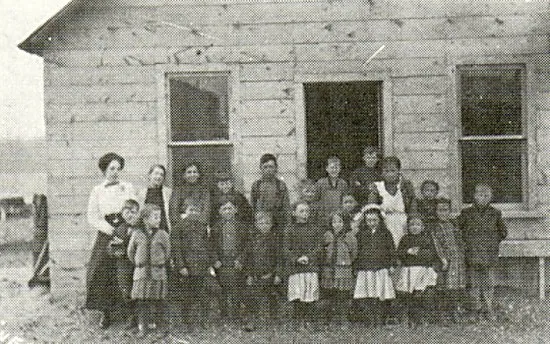
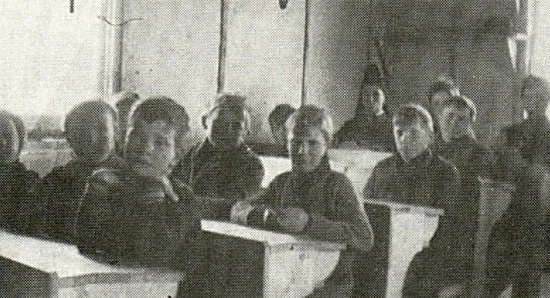
|
| Ausland Lake |
Northern Saskatchewan
| Deep River Fur Farm |
| Deep River Trapping Page |
| Deep River Fishing Page |
| My Norwegian Roots |
| Early Mink of People Canada |
E. Rendle Bowness
| The Manager's Tale |
Hugh McKay Ross
| Sakitawak Bi-Centennial |
200 Year History.
| Lost Land of the Caribou |
Ed Theriau
| A History of Buffalo Narrows |
| Hugh (Lefty) McLeod |
Bush Pilot
| George Greening |
Bush Pilot
| Timber Trails |
A History of Big River
| Joe Anstett, Trapper |
| Bill Windrum, Bush Pilot |
| Face the North Wind |
By Art Karas
| North to Cree Lake |
By Art Karas
| Look at the Past |
A History Dore Lake
| George Abbott |
A Family History
| These Are The Prairies |
| William A. A. Jay, Trapper |
| John Hedlund, Trapper |
| Deep River Photo Gallery |
| Cyril Mahoney, Trapper |
| Saskatchewan |
A Pictorial History
| Who's Who in furs |
1952 to 1956
| A Century in the Making |
A Big River History
| Wings Beyond Road's End |
| The Northern Trapper, 1923 |
| My Various Links Page |
| Ron Clancy, Author |
| Roman Catholic Church |
A History from 1849
| Frontier Characters - Ron Clancy |
| Northern Trader - Ron Clancy |
| Various Deep River Videos |
| How the Indians Used the Birch |
| The Death of Albert Johnson |
| A Mink and Fish Story |
Buffalo Narrows
| Gold and Other Stories |
Berry Richards

